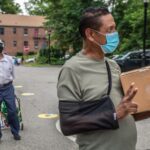As community residents and recovery workers, Latino immigrants play important roles after disasters, yet are rarely included in preparedness planning. A community-university-labor union partnership created a demonstration project after Hurricane Sandy to strengthen connections to disaster preparedness systems to increase community resilience among Latino immigrant communities in New York and New Jersey. Building ongoing ties that connect workers and community-based organizations with local disaster preparedness systems provided mutual benefits to disaster planners and local immigrant communities, and also had an impact on national disaster-related initiatives.
The management of volunteers – What can human resources do? A review and research agenda
There is an increasing interest from scholars and practitioners in understanding how non-profit organizations can design and implement human resources (HR) practices to enhance desirable volunteer attitudes and behaviors. This paper presents a comprehensive overview of existing studies on the relationship between HR practices and volunteering outcomes. We use the ability-motivation-opportunity model as a guiding…

